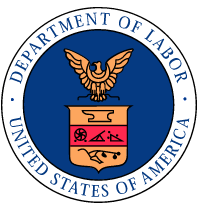The Non-Enforcement Period for the Families First Coronavirus Response Act (FFCRA) is Over
 |
The U.S. Department of Labor has announced the end of the temporary period of non-enforcement of paid leave protections under the Families First Coronavirus Response Act (FFCRA). This non-enforcement period allowed for employers to familiarize themselves and come into compliance with the FFCRA’s requirements. The Department of Labor has also issued guidance during this non-enforcement period, which we have summarized for you as it has become available. |
Along with the end of the non-enforcement period, the Department of Labor published new questions and answers. These are summarized below.
For your reference, a complete list of the Department of Labor’s questions and answers is available here: https://www.dol.gov/agencies/whd/pandemic/ffcra-questions
Additionally, the Department of Labor has issued a fact sheet for employers, which is available here: https://www.dol.gov/agencies/whd/pandemic/ffcra-employer-paid-leave
While the FFCRA was effective as of April 1 (and employers were legally obligated to be in compliance with the FFCRA as of that date), the Department of Labor had instituted the non-enforcement period to assure employers that it would not take action against them until further guidance had been released. That period is now over. Please consult with us if you have any questions about your policies and practices.
If an employee becomes ill with COVID-19 symptoms, decides to quarantine for two weeks, and then returns to work but does not seek a medical diagnosis or the advice of a health care provider, can the employee get paid for those two weeks under the FFCRA?
Generally no. If an employee becomes ill with COVID-19 symptoms, the employee may take paid sick leave under the FFCRA only to seek a medical diagnosis or if a health care provider otherwise advises the employee to self-quarantine.
If the employee tests positive for COVID-19 or is advised by a health care provider to self-quarantine, the employee may continue to take paid sick leave.
The employee may not take paid sick leave under the FFCRA if the employee unilaterally decides to self-quarantine for an illness without medical advice.
What is a “place of care” of an employee’s child?
A “place of care” is a physical location in which care is provided for the child. The physical location does not have to be solely dedicated to such care. Examples include day care facilities, preschools, before and after school care programs, schools, homes, summer camps, summer enrichment programs, and respite care programs.
Who is a “child care provider” that an employee can claim is unavailable?
A “child care provider” is someone who cares for the child. This includes individuals paid to provide child care, like nannies, au pairs, and babysitters. It also includes individuals who provide child care at no cost and without a license on a regular basis, for example, grandparents, aunts, uncles, or neighbors.
Can more than one guardian take paid sick leave or expanded family and medical leave simultaneously to care for an employee’s child whose school or place of care is closed, or child care provider is unavailable, due to COVID-19 related reasons?
An employee may take paid sick leave or expanded family and medical leave to care for the employee’s child only when the employee needs to, and actually is, caring for the employee’s child if the employee is unable to work or telework as a result of providing care. An employee does not generally need to take such leave if a co-parent, co-guardian, or the employee’s usual child care provider is available to provide care.
If an employee’s child’s school or place of care has moved to online instruction or to another model in which children are expected or required to complete assignments at home, is it “closed”?
Yes. If the physical location where the child received instruction or care is now closed, the school or place of care is “closed” for purposes of paid sick leave and expanded family and medical leave.
When is an employee eligible for paid sick leave based on a “substantially similar condition” specified by the U.S. Department of Health and Human Services?
The U.S. Department of Health and Human Services (HHS) has not yet identified any “substantially similar condition” that would allow an employee to take paid sick leave.
Can an employee take paid sick leave or expanded family and medical leave under the FFCRA if the employee is on an employer-approved leave of absence?
It depends on whether the leave of absence is voluntary or mandatory.
If voluntary, the employee may end the leave of absence and begin taking paid sick leave or expanded family and medical leave under the FFCRA if there is a qualifying reason preventing the employee from being able to work (or telework).
However, an employee may not take paid sick leave or expanded family and medical leave under the FFCRA if the leave of absence is mandatory. This is because it is the mandatory leave of absence, and not a qualifying reason for leave, that prevents the employee from being able to work (or telework).
Are stay-at-home and shelter-in-place orders the same as quarantine or isolation orders?
Yes, for purposes of the FFCRA, a Federal, State, or local quarantine or isolation order includes shelter-in-place or stay-at-home orders, issued by any Federal, State, or local government authority.
Under what circumstances may an employer require an employee to use his or her existing leave under a company policy?
Paid sick leave under the Emergency Paid Sick Leave Act portion of the FFCRA is in addition to any form of paid or unpaid leave provided by an employer, law, or an applicable collective bargaining agreement. An employer may not require that the employer-provided paid leave runs concurrently with (cover the same hours as) paid sick leave under the Emergency Paid Sick Leave Act.
However, an employer may require that any paid leave already available to an employee under the employer’s policies to allow an employee to care for his or her child or children because their school or place of care is closed (or child care provider is unavailable) due to a COVID-19 related reason will run concurrently with paid expanded family and medical leave under the Emergency Family and Medical Leave Expansion Act portion of the FFCRA. In this situation, the employer must pay the employee’s full pay during the leave until the employee has exhausted available paid leave under the employer’s plan, including vacation and/or personal leave. However, the employer may only obtain tax credits for wages paid at 2/3 of the employee’s regular rate of pay, up to the daily limits as set forth in the FFCRA ($200 per day or $10,000 in total). If the employee exhausts available paid leave under the employer’s plan, but has more paid expanded and medical family leave time available under the FFCRA, the employee will receive any remaining paid expanded and medical family in the amounts as set forth in the FFCRA.
An employee may elect, but may not be required by the employer, to take paid sick leave under the paid sick leave portion of the FFCRA or paid leave under the employer’s plan for the first two weeks of leave (which first two weeks the FFCRA states is unpaid), that is provided under the expanded family and medical leave portion of the FFCRA.
Senate Approves Deal For $484 Billion More In Coronavirus Aid
The U.S. Senate has approved a measure to add roughly $484 billion in new funds to bolster the COVID-19 response legislation. House leaders are planning a vote for Thursday.
The deal includes $322 billion in additional money for the small-business loan program. Specifically, there is $60 billion allocated for small-business disaster loans and grants, $75 billion for emergency funding for hospitals, and roughly $25 billion for testing.
Please stay tuned as the final deal could be rolled out by week’s end. This would be some welcomed relief for small businesses that were unable to benefit from the PPP loan program, as funds ran out in less than two weeks.
 |
 |
| ERICA M. SOROSKY esorosky@ptwww.com (949) 851-7271 |
ERIN K. OYAMA eoyama@ptwww.com (949) 851-7288 |

